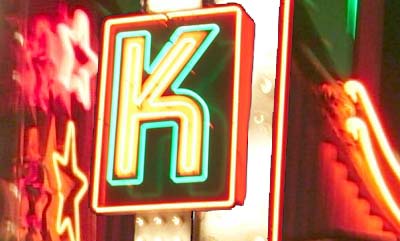 In only his fourth feature, cinematographer Bruno Delbonnel, along with
director
Jean-Pierre Jeunet, managed to work magic on the City of Light, giving Paris
-- a place
already laden with romantic associations -- an uncommonly storybook quality
on
"Amelie."
In only his fourth feature, cinematographer Bruno Delbonnel, along with
director
Jean-Pierre Jeunet, managed to work magic on the City of Light, giving Paris
-- a place
already laden with romantic associations -- an uncommonly storybook quality
on
"Amelie."
"I made a fake Paris, a really nice place, like in musicals," director
Jeunet says of his
collaboration with Delbonnel.
"We knew we wanted to have an explosion of color for everything," he adds,
knowing
that they planned to correct and enhance the color digitally after filming
-- even turning
cloudy Paris skies blue.
The gorgeous color scheme was inspired by an artist living in Jeunet's Paris
neighborhood of Montmartre, Brazilian painter Machado, particularly his
palette of reds,
browns, golds and greens.
"Basically, what we wanted was a gold-green look with a lot of red," says
Delbonnel.
This palette dictated everything "from production design to costume design
to makeup
... even the fabric we used in the wall in the apartment."
"I decided that I wanted to use filters on the camera just to go as far as I
could to
achieve this look. I used mostly an antique Suede filter, which is really
yellow, on the
interior shots, because I was using a tungsten-balanced film, Kodak
5277/320. For the
exterior shots, I was using daylight film (Kodak 5246/250) and I chose a
coral filter to
match the two different kind of films."
Achieving "Amelie's" impossibly rich hues and picture-perfect Paris wouldn't
have been
possible before the digital process, Jeunet explains. "Before, with the
chemical process,
you had some limits. For example, with the 'City of Lost Children,' it was
very difficult to
get the red and the green in the same frame. And now with the digital
process, you
can get everything you want. It's amazing, because you can fix just one
small part of
the frame or you can make a moving matte."
Enthuses Delbonnel, "The object was to have this kind of fairy-tale look
like you have in
a book for children. We were really, really thrilled with the end result."
— Sharon Knolle



